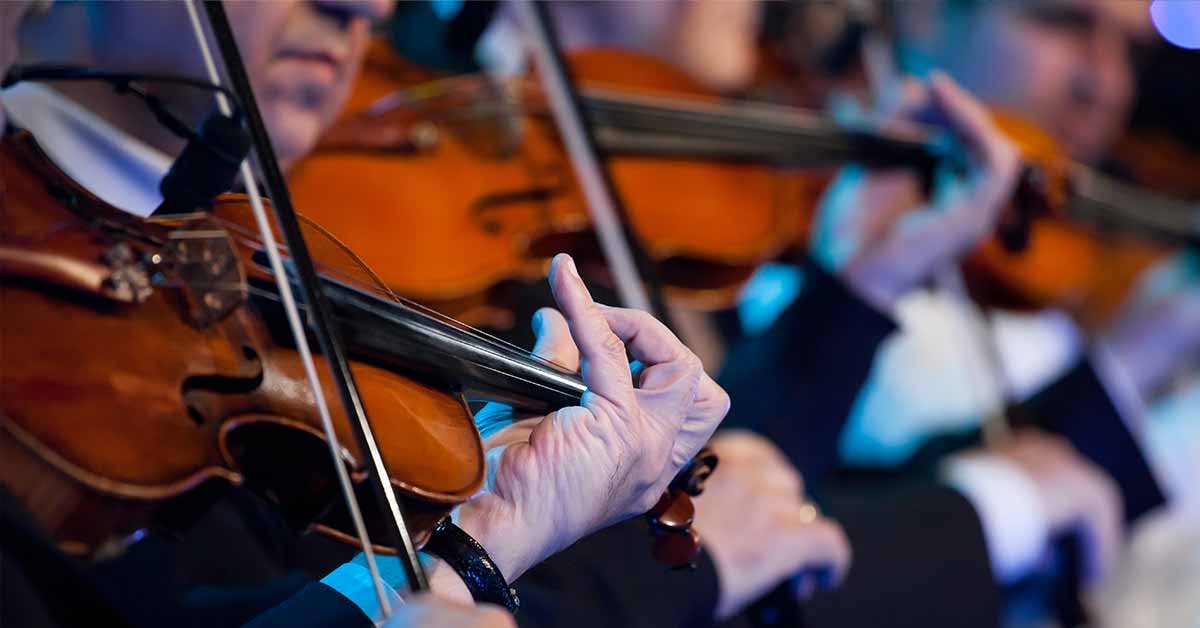This is a continuation of the behind the scenes look on my preparation for an upcoming conductorless concert of Haydn Symphony #31. I thought it would be interesting to share the process and methods used by many musicians, both for conducted and conductorless concerts. Concerts are planned months ahead of the performance date, and this upcoming Haydn concert has been on my front burner since July.
Within hours of landing in Jackson Hole for my summer orchestra, Grand Teton Music Festival (GTMF), I headed first to the GTMF music librarian to begin my preparation for Chattanooga Symphony’s November chamber concert. Last article I shared all of the valuable information and connections a librarian has access to. This article is devoted to the connections!
Librarian Crozet Duplantier recommended I talk with was conductor and Haydn expert, Nicholas McGegan, first.

I spoke with Nic for about an hour and he shared many crucial details ranging from how to set the orchestra up to how to solve balance issues. I won’t bore you with all of the details, but I have four pages of notes and a very marked up orchestra score!
The thing that struck me the most about my conversation with Nic was his love and enthusiasm for this work. That enthusiasm was utterly contagious for me. Little details, stories making this work relevant, and the insistence to put the value of enjoyment over trying to make a perfect, if not sterile, performance invigorated the work for me.
It was an important lesson on just how passion and energy can shape one’s view of a piece or composer. Nic guided me from being ambivalent to the work to suddenly feeling a relevant connection to Haydn and his musicians he wrote the symphony for.
“This symphony’s last movement is a joke!” Nic explained.
He went on to explain that it is a theme and variations that purposefully tricks the audience to think it’s going to be over before it’s really over.
Back in Haydn’s day, the entertainment could be often predictable. Nic explained how Haydn liked to keep the audience on their toes by mixing up traditional orders and expectations now and then.
It’s a crude comparison, but it could be argued that an audience in 1765 would have been able to lay out the plot of most symphonic works the same way a 1990’s television watcher would predict a formulaic sitcom or drama series. There is an element of predictability to both so when a TV writer mixes up perceptions or expectations, the audience takes notice.
The same can be said of Haydn’s audience. During the last movement of Symphony #31, Haydn puts the audience through the expected and predictable Theme and Variations. Each variation features a different solo instrument and then Haydn gives the impression the end of the symphony was emanate by a variation involving the whole orchestra. In a kidding manner Haydn follows the orchestra passage by slipping in a bass solo in an additional variation. Ultimately mixing up what would have been considered a proper order. It clearly was a joke intended for the bass player, too. More about that in the next article!
Besides Haydn’s desire to mix it up and keep it fresh, there is another dimension to ponder. Nic shared stories of the actual performers that were members of Haydn’s orchestra. If you imagine a Classical orchestra back in Haydn’s day, the image that comes to most people’s minds is that of powdered wigs, stiff concert dress, and palace concert venues. It’s hard to imagine the members of Haydn’s orchestra as real people with real issues or flaws.
But that’s anything from the case. For example, the flute player was fired after the premier of Symphony #31. He was fired for carelessly shooting a gun at birds which started a building fire. He was later rehired almost a year later after a bit of persuading from Haydn to his boss.
Next article will be focusing on two more experts who shared the stage at the GTMF Haydn #31 concert a few years back and were kind enough to share their perspective and point of view from their sections.










